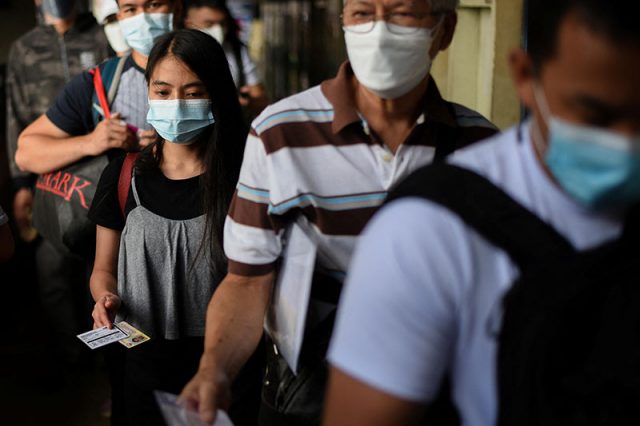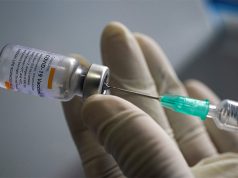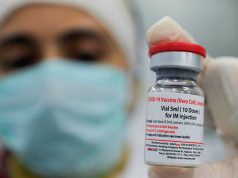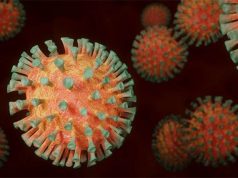
Various questions were raised about the health department’s new format for COVID-19 case bulletins which is now released on a weekly basis to make the public focus on the severity instead of the infection numbers.
The Department of Health on Monday posted its newly-formatted case bulletin which reported on the healthcare utilization and vaccination rates, as well as the new number of cases from March 1 to 7.
Gone are the number of new cases per day, as well as the total number of COVID-19 infections. The new format also includes the daily tally of deaths and recoveries.
The number of active COVID-19 cases, as well as the figures on individuals tested and positivity rate, were also removed.
According to the health agency, the new format aims to shift the focus into more meaningful data. It also seeks to highlight long-term recovery through the removal of emphasis on daily numbers.
“As to the case numbers, if it’s mild, we treat it like it’s part of our lives. We live with the virus, we focus on the critical,” Health Undersecretary Maria Rosario Vergeire said in a Palace briefing.
She also said that the change in reporting COVID-19 cases would be “permanent.”
The health official said that over 63 million Filipinos have been fully vaccinated against COVID. She said COVID-19 cases continue to have a downward trend so far.
Vergeire added that the agency will continue monitoring the situation and providing the public with updates.
The case with the cases
The change in the COVID-19 case bulletin format initially left some Filipinos “confused” about the information presented.
“Lol. Much better pa ‘yung layout last time, this is confusing. Akala ko 6K new cases today,” a Twitter user said in response to the DOH’s post.
“Infographics are for easy visualization of information. So ano ‘to DOH?” another Filipino tweeted.
Others disapproved the removal of the total number of cases, as well as the active infections in the new bulletin.
A Twitter user claimed that it was the agency’s way of supposedly hiding the numbers which regularly give the public a view of the country’s COVID-19 situation.
“It is obvious that the DOH is hiding data… wala (ng) daily cases, wala (ng) positivity rate, wala (ng) no. of individuals tested… para siguro i-justify ang pagluluwag kahit hindi pa dapat… gulatan na lang kapag nagka-surge ulit,” wrote another Filipino.
Others expressed how “important” the daily COVID-19 numbers are.
“I hope they too would still reflect the active number of cases (’cause) that represents the virus’ activeness face value,” a Twitter user said.
“Wala pong total active cases? Importante po kasi ‘yon sa akin and daily cases… ‘Yon tinitignan at inaabangan ko sa info… ‘Pag bumababa cases, (nawawala) anxiety ko… pero ‘pag tumataas, at least alam ko din (para mas) mag-ingat,” wrote a different Filipino.
Some aired their concerns about the removal of the positivity rate and the number of people being tested for COVID-19.
“How could we know the positivity rates now? I thought it was one of the most important indicators in managing the pandemic,” a Twitter user said.
Physician Tony Leachon, former special adviser to the National Task Force Against COVID-19, share similar sentiments.
“The positivity rate is important together (with) the vaccination rate. These are (two) important metrics of success,” he tweeted.
“Weekly reporting is quite a long wait for the (government) and the people to react particularly on Alert Level 1 and campaign mode which could trigger surges due to mobility,” Leachon added.
Statistician Peter Cayton, who regularly analyzes COVID-19 case bulletins, likewise aired his concerns.
“Walang weekly breakdown per day? Also, burado na ang testing information. Wala[ng] active case counts,” part of his tweet said.
The positivity rate shows how many tested individuals actually infected with COVID-19.
According to Our World in Data, the metric serves “as a measure of how adequately countries are testing” and “to help us understand the spread of the virus, in conjunction with data on confirmed cases.”
“The positive rate is a good metric for how adequately countries are testing because it indicates the level of testing relative to the size of the outbreak. To be able to properly monitor and control the spread of the virus, countries with more widespread outbreaks need to do more testing,” it said on its website.
Last year, the DOH announced that it would stop releasing daily COVID-19 case bulletins but it temporarily halted its plan following the recent Omicron surge.
At that time, some Filipinos aired concerns about the potential loss of public awareness about COVID-19 if numbers wouldn’t be released daily.
“The importance of the daily case bulletins was to help disseminate the latest COVID-19 numbers in time for the primetime news hour nationwide,” Jason Haw, a doctoral epidemiology student from the John Hopkins Bloomberg School of Public Health, said before.
“I say this as someone who was heavily involved in setting up the COVID-19 surveillance system and the public tracker in 2020,” he added.
RELATED: Why Filipinos want to continue receiving DOH’s daily COVID-19 cases updates
Meanwhile, there are other experts outside the country who believe that providing daily COVID-19 case counts is no longer necessary.
According to them, numbers concerning hospitalization and deaths have a “better” representation of “the effect of the disease on the community and the health care system.”
“That would allow public health agencies to focus on prevention efforts in high-risk populations such as long-term care facilities and work more closely with schools and vaccination clinics,” Meredith Allen, vice president for health security at the Association of State and Territorial Health Officials, was quoted before.









